
Jack Bros. is an action video game developed and published by Atlus for the Virtual Boy, released in late 1995 in Japan and North America. It is a spin-off from Atlus' video game series Megami Tensei, and was the first entry to be released outside Japan.

Mario Clash is a 1995 action video game developed and published by Nintendo for the Virtual Boy. It is the first stereoscopic 3D Mario game, and a 3D reimagining of Mario Bros. Reception for the game was mixed.
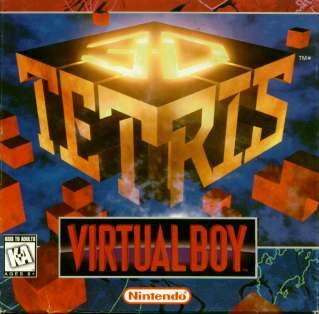
3D Tetris is a 1996 puzzle video game developed by T&E Soft and published by Nintendo for the Virtual Boy. It was released on March 22, 1996, only in North America. Players control multiple falling blocks, rotating and positioning them to clear layers in a three-dimensional environment similar to Tetris's gameplay. The game contains multiple modes and variations thereof, as well as different difficulty settings and levels. Parts of 3D Tetris are rendered as 3D wire-frame models. A version of the game entitled Polygo Block was set for release in February 1996 in Japanese markets, but was never released. The game received mostly negative reviews with critics panning it for a lack of originality.

Virtual Boy Wario Land is a 1995 platform video game developed and published by Nintendo for the Virtual Boy. It stars Wario, who finds himself deep underground after stumbling upon a treasure-filled cave and must find his way back to the surface. Throughout the journey, the player explores and searches for items and power-ups while fighting enemies and defeating bosses. Wario has the ability to jump between the background and foreground at certain points, making use of Virtual Boy's stereoscopic 3D effect.

Galactic Pinball is a 1995 pinball video game developed by Intelligent Systems and published by Nintendo for the Virtual Boy. The game was released on July 21, 1995 in Japan and on August 14, 1995 in the United States. It is set in the Milky Way galaxy, and has players maneuvering a puck around one of four pinball tables available in the game. The Virtual Boy's standard red-and-black color scheme resulted in criticism of this and other games on the platform for causing nausea, headaches, and eye strain. It uses parallax, which allows the game to display three-dimensional effects. It has received a mixed reception; it was praised for its authenticity, while reception to its physics and controls were mixed. It has received criticism for its lack of ambition and originality.

Innsmouth no Yakata, also rendered as Insmouse no Yakata, is a 1995 first-person video game developed by Be Top and published by I'MAX in Japan for the Virtual Boy. Assuming the role of a private detective in 1922, the player is tasked with escaping a monster-infested mansion with an artifact called the Necronomicon. The player navigates several mazelike levels that must be finished in a certain amount of time. It is loosely based on the H.P. Lovecraft novel The Shadow over Innsmouth, though the only similarity between the two is the presence of fishlike monsters. It received mixed reviews, with critics praising its Lovecraftian setting. Reception of the gameplay was mixed, with critical contemporary reviews from magazines Famitsu and VB Guide, though it was viewed positively for its ambition and uniqueness.

Vertical Force is a 1995 vertically scrolling shooter video game developed and published by Hudson Soft for the Virtual Boy. It was released in Japan in August 1995 and North America by Nintendo in December 1995. The player controls a starship, the Ragnarok, that must destroy a malfunctioning supercomputer on a human colony planet before it wipes out all of mankind. Gameplay is similar to Hudson's Star Soldier series, featuring power-up items that increase the player's abilities and parallax scrolling. The player can move their ship farther into the background to avoid enemies and obstacles in the way.

Bomberman: Panic Bomber is a 1994 puzzle video game developed and published by Hudson Soft for the PC Engine on December 22, 1994. It was later released for the Neo Geo, Super Famicom, Sharp X68000, FM Towns, NEC PC-9821, Virtual Boy, and PlayStation Portable. It saw a re-release for the Wii and Wii U's Virtual Console services. Panic Bomber is a falling block game with the players' goal being to clear matching blocks using bombs, ensuring that their screen does not fill and that their opponents' screens do. It received mixed to positive reception, identified as a decent game by multiple critics. It has been compared to the falling block puzzle game Tetris. The Virtual Boy version received a mixed reception for its handling of the platform's visual capabilities.

Waterworld is a series of video games released for the Super Nintendo Entertainment System, Virtual Boy, MS-DOS, Microsoft Windows and Game Boy, based on the film of the same name, along with unpublished versions for the Mega Drive/Genesis, Sega Saturn, Atari Jaguar, 3DO and PlayStation. These games were produced by Ocean Software. The SNES and Game Boy games were released only in Europe in 1995 and the Virtual Boy game was released exclusively in North America in November 1995. It was released for PC in 1997. The game received widespread negative reviews and the version released for the Virtual Boy is generally considered to be the worst game of its 22 releases.

SD Gundam Dimension War is a 1995 tactical role-playing video game published for the Virtual Boy in Japan by Bandai. Being the system's only licensed game in Japan, it is part of the SD Gundam series, a spin-off of the larger Gundam franchise by Sotsu and Sunrise. Players control a fleet of robots and vehicles as they set out to rid the galaxy of enemies, with gameplay involving moving robots towards opponents and engaging in combat sequences.

Virtual League Baseball is a 1995 baseball video game developed and published by Kemco for the Virtual Boy. A sequel, Virtual League Baseball 2, was planned, but later canceled.
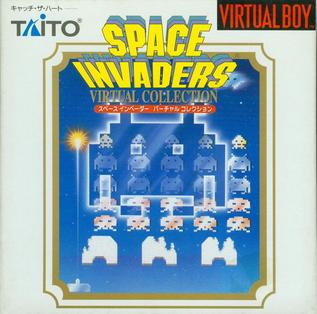
Space Invaders Virtual Collection is a 1995 compilation video game developed and published by Taito in Japan for the Virtual Boy. It includes direct ports of the arcade game Space Invaders (1978) and its direct sequel Space Invaders Part II (1979), alongside 3D remakes that take advantage of the Virtual Boy's hardware capabilities. Both games feature a number of alternative gameplay modes, such as score attack and time attack modes.
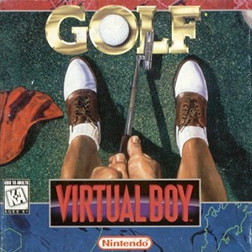
Golf is a video game developed and published by T&E Soft for the Virtual Boy. It was released in August 1995 in Japan and by Nintendo in November 1995 in North America. Golf uses standard golf rules and is set in the fictional 18-hole Papillion Golf & Country Club. Hazards include water, sand traps, trees, and deep rough grass. It is displayed in the Virtual Boy's standard red and black color scheme with 3D effects by use of a 3D processor. It was met with critical praise for its controls and physics and mixed reviews for its graphics. Nintendo Power called it the third best Virtual Boy release of its year.
Pilotwings is a series of flight simulation video games beginning with the 1990 video game Pilotwings and most recently Pilotwings Resort in 2011. One of Nintendo's franchises, the series was released on the Super Nintendo Entertainment System, Nintendo 64, and Nintendo 3DS.

Bound High! is an unreleased action-puzzle video game that was in development by Japan System Supply and planned to be published by Nintendo on a scheduled 1996 release date exclusively for the Virtual Boy. In the game, players take control of a transforming robot named Chalvo through a series of levels riddled with hazardous obstacles to avoid across multiple worlds, while destroying or knocking out alien invaders off the area. The project was first conceptualized by designer and programmer Hideyuki Nakanishi, who wrote the idea on paper and placed it within a wall inside the offices of Japan System Supply, with his manager eventually greenlighting its development after seeing it.

V-Tetris is a 1995 puzzle video game developed by Locomotive and published by Bullet-Proof Software in Japan for the Virtual Boy. Its gameplay involves the player clearing horizontal lines by moving pieces of different shapes that descend onto the playing field by filling empty spaces in order to make completed lines disappear and gain points across three modes of play.
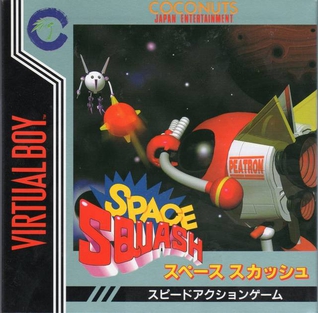
Space Squash is a 1995 sports video game developed by Tomcat System and published by Coconuts Japan Entertainment in Japan for the Virtual Boy. The player assumes the role of a robot called Peatron to defeat a group of space pirates that have taken over the planet Animal Star on a intergalactic squash tournament. Its gameplay involves Peatron ricocheting a ball across a three-dimensional court and defeating the opponent on the other side in order to proceed further in the tournament.

Virtual Fishing is a 1995 fishing video game developed by Locomotive Corporation and published by Pack-In-Video in Japan for the Virtual Boy. The player participates in a series of fishing tournaments at various different locations by catching a large number of fishes with a high average weight under a time limit. Its gameplay consists of two segments and features two additional modes of play.
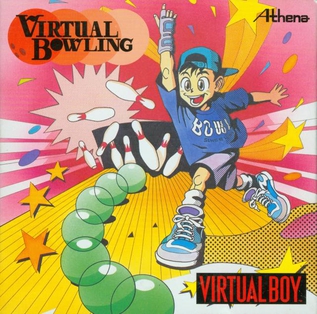
Virtual Bowling is a 1995 sports video game developed and published by Athena in Japan for the Virtual Boy. In the game, the player participates in a series of bowling tournaments consisting of four 10-frame matches at various alleys against computer-controlled opponents, in order to obtain a high score and progress further. Its gameplay, featuring three modes of play, is viewed from a first-person perspective.



















